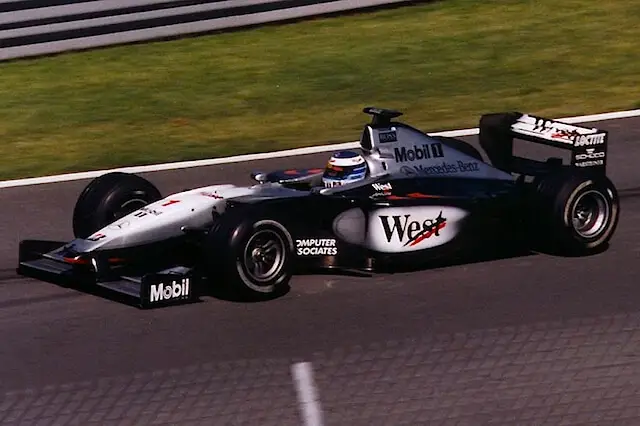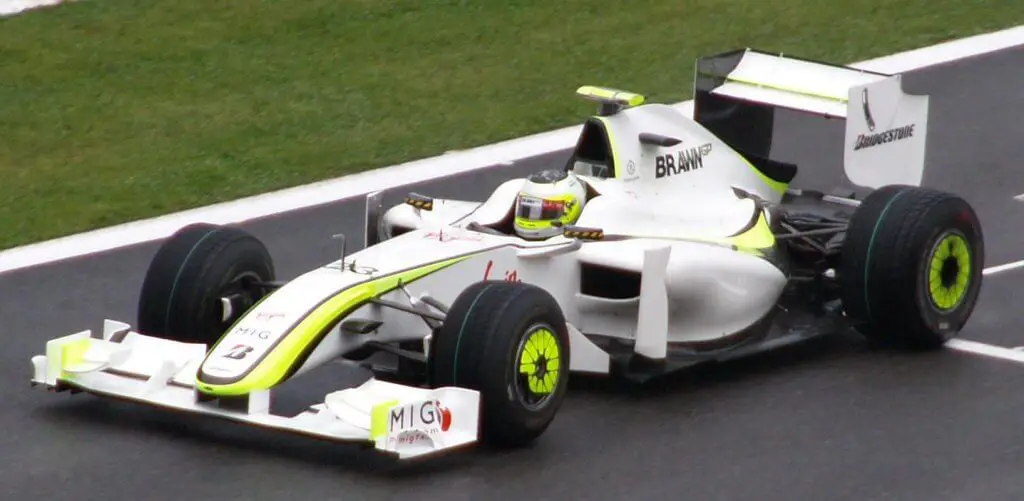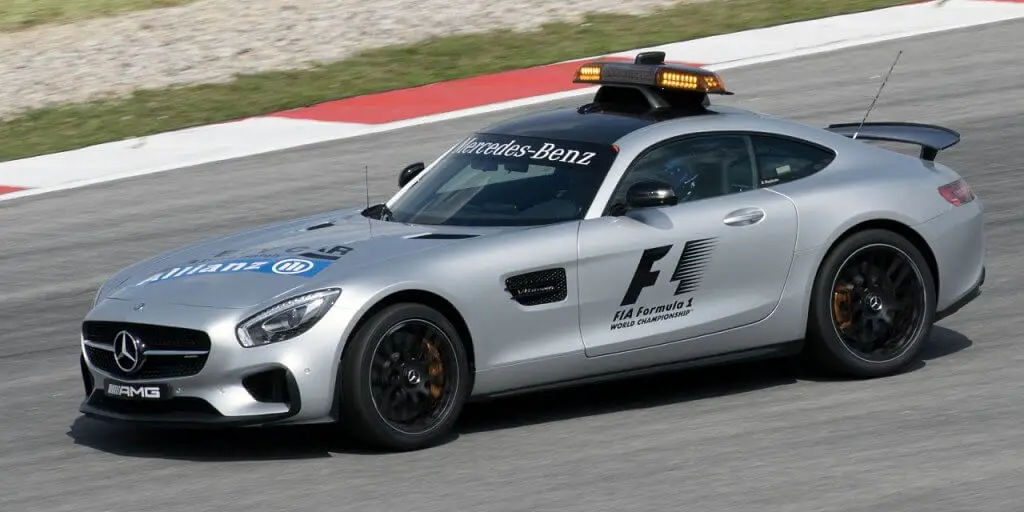There have been 11 occasions on which a Formula 1 Grand Prix has finished under Safety Car conditions. We take a look at the times that it has happened!
Note: this list does not include races which ended under red flag conditions. A full list of races which did not reach their full scheduled distance can be found here.
1999 Canadian Grand Prix
The 1999 Canadian Grand Prix set two new records: it was the first race to feature four caution periods and was the first race to finish under Safety Car conditions. This was the race in which the ‘Wall of Champions’ was given its name. Damon Hill, Michael Schumacher and Jacques Villeneuve all fell victim to crashes at Turn 13. It was Heinz-Harald Frentzen’s collision at Turn 3 which saw the final Safety Car call out. As a result, Mika Hakkinen became the first driver to win under Safety Car conditions.

2009 Australian Grand Prix
It would be ten years before the next race ended under Safety Car conditions. It occurred at the 2009 Australian Grand Prix, which was won by Jenson Button on Brawn GP’s memorable debut appearance. The Safety Car had been called out due to a collision between Sebastian Vettel and Robert Kubica two laps from the end of the race. The duo had been second and third before their crash. Their retirements promoted Rubens Barrichello into second place, recording an impressive 1-2 for the new Brawn GP team.

2009 Italian Grand Prix
Two races ended under Safety Car conditions in 2009. The second race to do so was the 2009 Italian Grand Prix, in which Rubens Barrichello recorded Brawn GP’s final race win. The Safety Car was called out on the final lap due to Lewis Hamilton crashing out from third place. However, with Barrichello having already started the last lap the Safety Car did not actually appear on track.
2010 Monaco Grand Prix
Mark Webber took victory in the 2010 Monaco Grand Prix under Safety Car conditions. On Lap 70, Jarno Trulli and Karun Chandhok’s collision – an incident which Webber was lucky to avoid – brought out the Safety Car. Webber cruised home to lead the field over the line, however there was controversy as Michael Schumacher overtook Fernando Alonso before the finish line. The Safety Car had returned to the pit lane at the end of the final lap, but overtaking was still not permitted. Schumacher picked up a 20 second penalty for the incident, dropping him out of the points. The event prompted the FIA to give this rule more clarity.
2012 Brazilian Grand Prix
The tense 2012 title-deciding Brazilian Grand Prix came to an end under Safety Car conditions due to a crash for Paul di Resta. The Scottish driver lost control of his Force India on the penultimate lap. That ensured Jenson Button would win the race, recording the final victory of his career. He also became the first driver to record two wins under Safety Car conditions. Sebastian Vettel finished in sixth place, which was enough to make him Formula 1’s youngest-ever three-time World Champion.
2014 Canadian Grand Prix
Fifteen years on from the first race ending behind the Safety Car at the circuit, Daniel Ricciardo recorded his maiden win at the 2014 Canadian Grand Prix in similar conditions. In the 70 lap race, the Australian overtook race leader Nico Rosberg at the end of Lap 68 – and he made the move just in time. At the start of the final lap, Sergio Perez and Felipe Massa collided at the first corner, bringing out the Safety Car. With the two drivers unharmed, Ricciardo cruised home to celebrate his first win in Formula 1.
2015 Chinese Grand Prix
Max Verstappen came to a halt on the start/finish straight two laps before the end of the Chinese Grand Prix. With his car stranded, the Safety Car was called out and would not return to the pits until the end of the race. Lewis Hamilton won the race, leading home Mercedes team-mate Nico Rosberg.
2019 Bahrain Grand Prix
Both Renault drivers came to a standstill four laps from the end of the 2019 Bahrain Grand Prix. Daniel Ricciardo and Nico Hulkenberg both retired with mechanical issues, prompting the Safety Car to make an appearance. The race remained under Safety Car conditions until the end. Having overtaken Charles Leclerc just five laps before the Safety Car was called, Lewis Hamilton led home a Mercedes 1-2. The Safety Car period allowed Leclerc to maintain third place, recording the first podium finish of his career.
2020 Bahrain Grand Prix
For a second season in succession, the Bahrain Grand Prix ended behind the Safety Car in 2020. Three laps from the end of the race, Sergio Perez – who was running inside the podium positions – came to a stop due to an engine failure. Due to Perez’s car catching fire, double waved yellow flags were shown and the Safety Car was eventually called out. The race remained under Safety Car conditions until the chequered flag. As a result, Lewis Hamilton became the first driver to have won three races under Safety Car conditions.
2022 Italian Grand Prix
The 2022 Italian Grand Prix was the tenth Formula 1 race to finish behind the Safety Car. It did so as a result of Daniel Ricciardo’s McLaren car coming to a stop on track seven laps from the end. The decision to end the race behind the Safety Car caused controversy, with some believing the event should have been red-flagged in order to allow the final stages of the race to take place under green flag conditions.
2023 Australian Grand Prix
The 2023 Australian Grand Prix ended under unusual circumstances. The heavily interrupted race was restarted (for the second time) on Lap 57 of 58. At the restart, three separate incidents saw four drivers retire. Logan Sargeant and Nyck de Vries collided at Turn 1 and ended their races in the gravel trap, while Alpine team-mates Pierre Gasly and Esteban Ocon collided with one another one turn later.
The incidents saw the race red-flagged once again before the cars had reached the second sector, meaning that the order was restart to that of the order before the restart, minus the four eliminated cars. However, with only one lap left to run, no further racing action would take place.
Instead, the cars eventually left the pit lane behind the Safety Car. At the end of the final lap, the Safety Car peeled into the pit lane and the 12 remaining drivers took the chequered flag under Safety Car conditions.
Races which finished under Virtual Safety Car conditions
In addition to the races which finished behind the Safety Car, there have also been two races which finished under Virtual Safety Car conditions.
The 2024 Australian Grand Prix finished under VSC conditions as a result of a last lap crash for George Russell, in which his Mercedes landed upside down in the middle of the track.
The 2024 Azerbaijan Grand Prix was neutralised as the result of a penultimate lap collision between Carlos Sainz and Sergio Perez, when the pair were battling over the final podium position.
Header image: Morio, Wikimedia Commons / CC BY-SA 4.0
This post was originally published in February 2021 and has since been updated.

